I‘m back in Beijing, the capital of China. I’m getting reacquainted with the city en route to Mongolia & Russia as I embark, I hope, on a Trans-Siberian journey back home to Europe. I had to organise a few things during this my third visit to Beijing (although my first visit during winter months), most importantly a Mongolian visa – I secured the Russian one in Seoul, Korea, my last stop. Between visits to the Mongolian embassy over the past fer days I found time to take a few pictures.
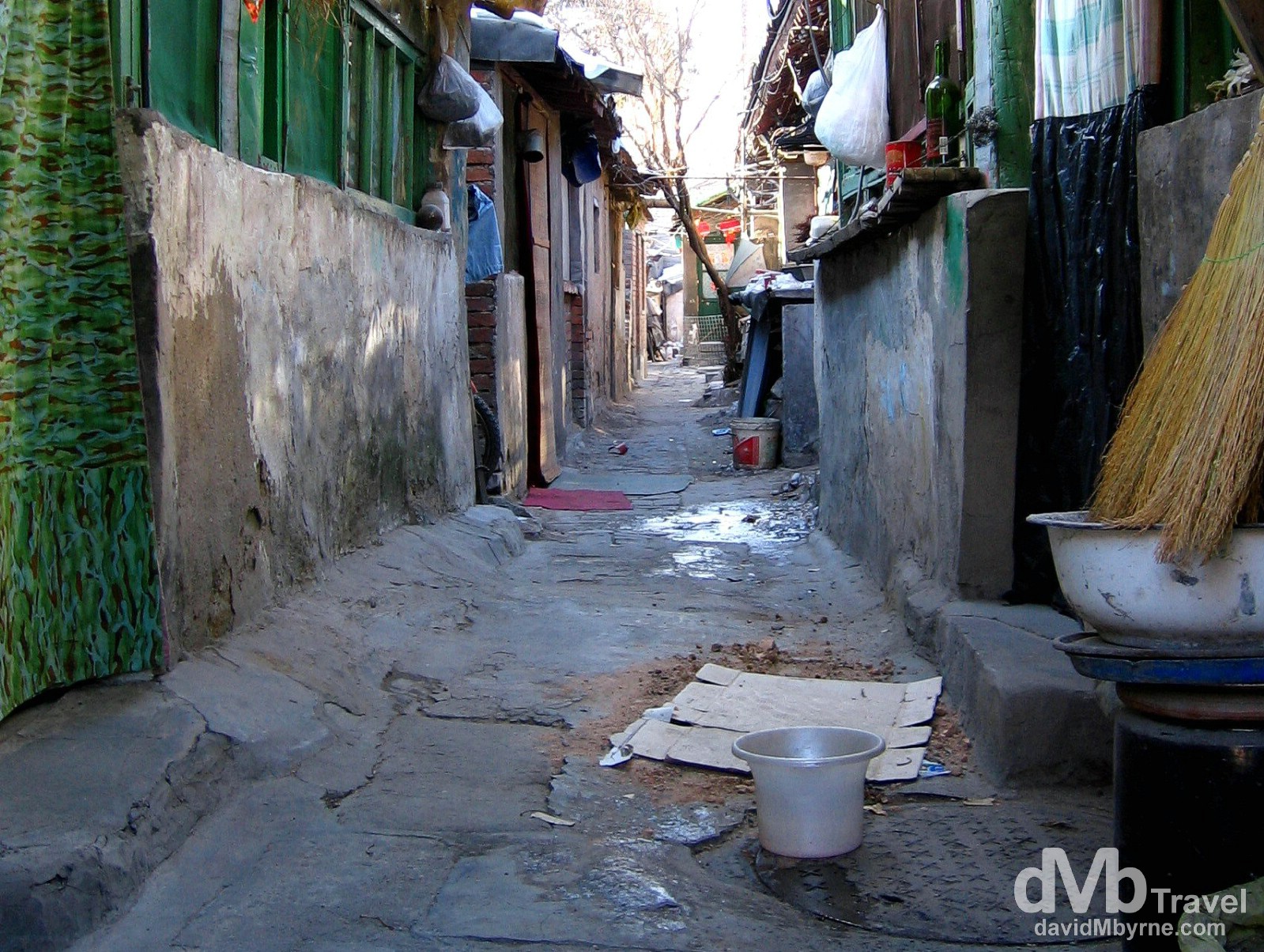
On my first full day back in the city I swung into tourist mode and took a look around the Qianmen district of the city, an area famous for its markets, narrow streets and hutongs, traditional Chinese residential laneways crammed full of decaying buildings, traditional Chinese traders and surprises. Although hutongs are a great place to explore (getting lost is expected and all part of the fun) and offer many great photo opportunities they are synonymous with poverty, bad plumbing and decaying buildings and thus have no place in a modern China, the face of which is Beijing. Thus vast areas of hutongs are being destroyed in the push to modernise Beijing, particularly with the staging of the upcoming Beijing Olympics in 2008. Hutong, Qianmen, Beijing, China. February 8, 2006
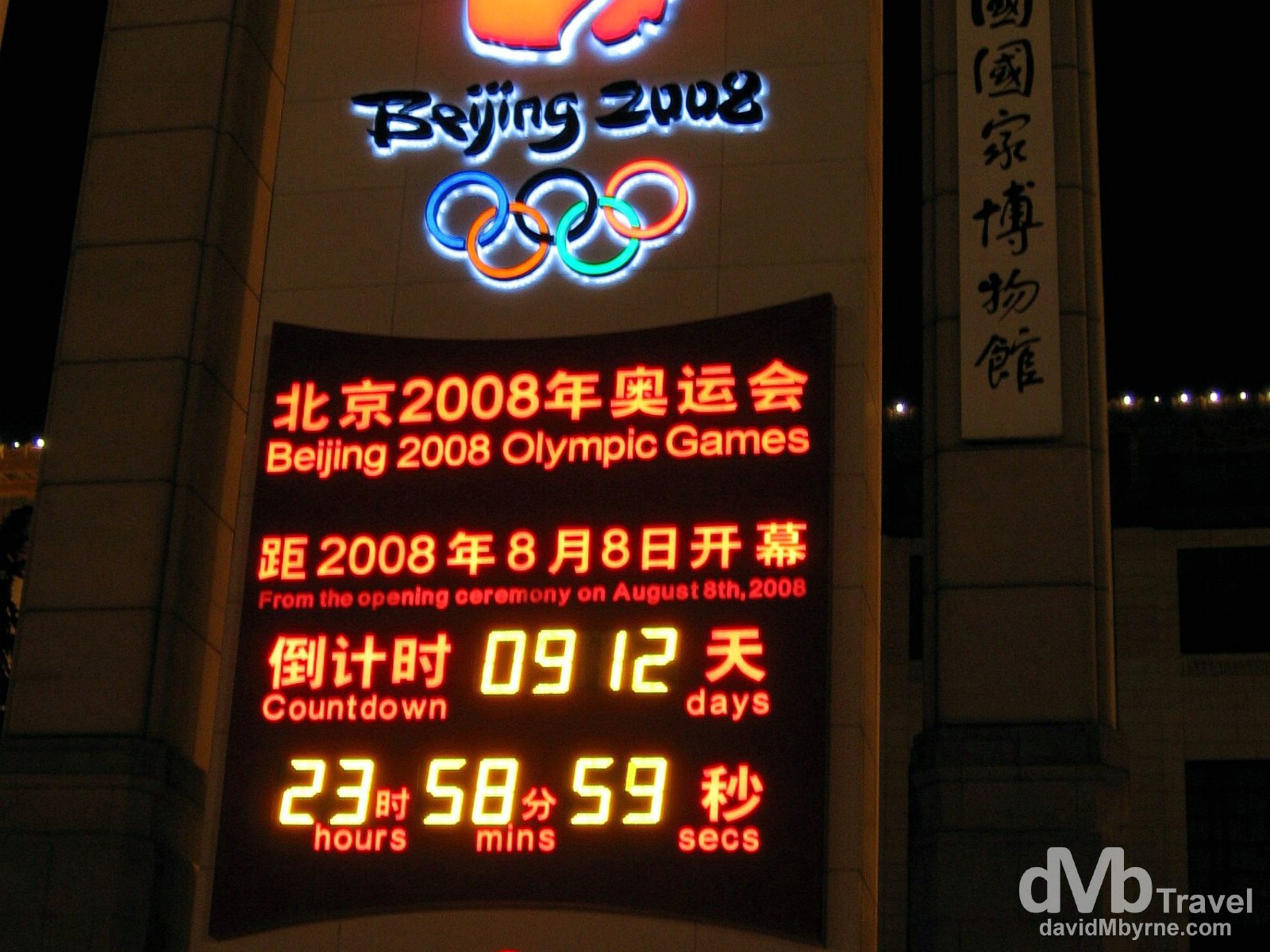
Yes, the biggest show on earth is coming to town. And it’ll be here in 912 days. Olympic countdown in off Tian’anmen Square in Beijing, China. February 7, 2006.
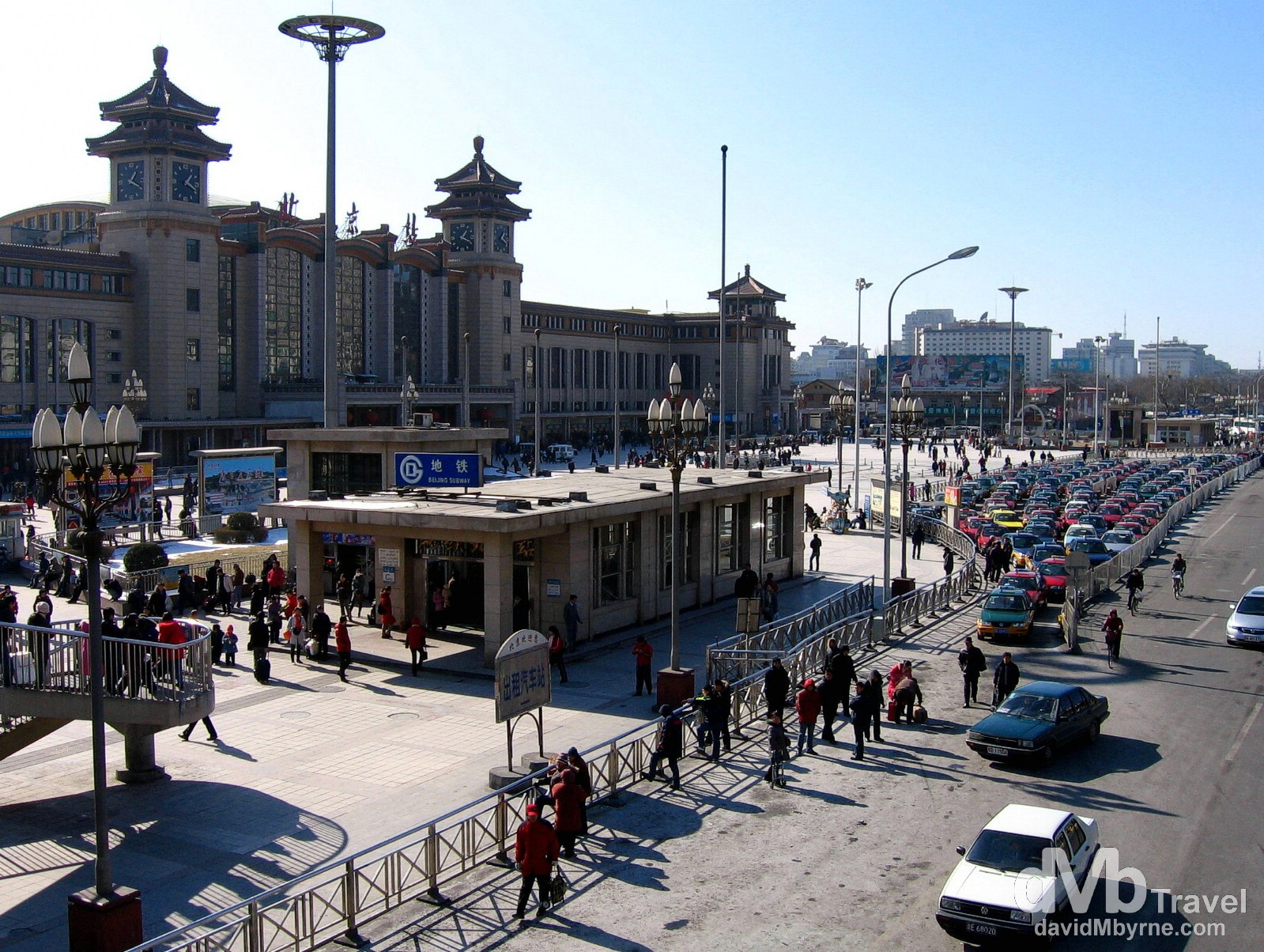
Activity outside Beijing Railway Station. Opened in 1959, it was the largest train station in China at the time. Though superseded by the city’s larger Beijing West and Beijing South Stations, this station remains the only one located inside the old walled city. Beijing, China. February 8, 2006.
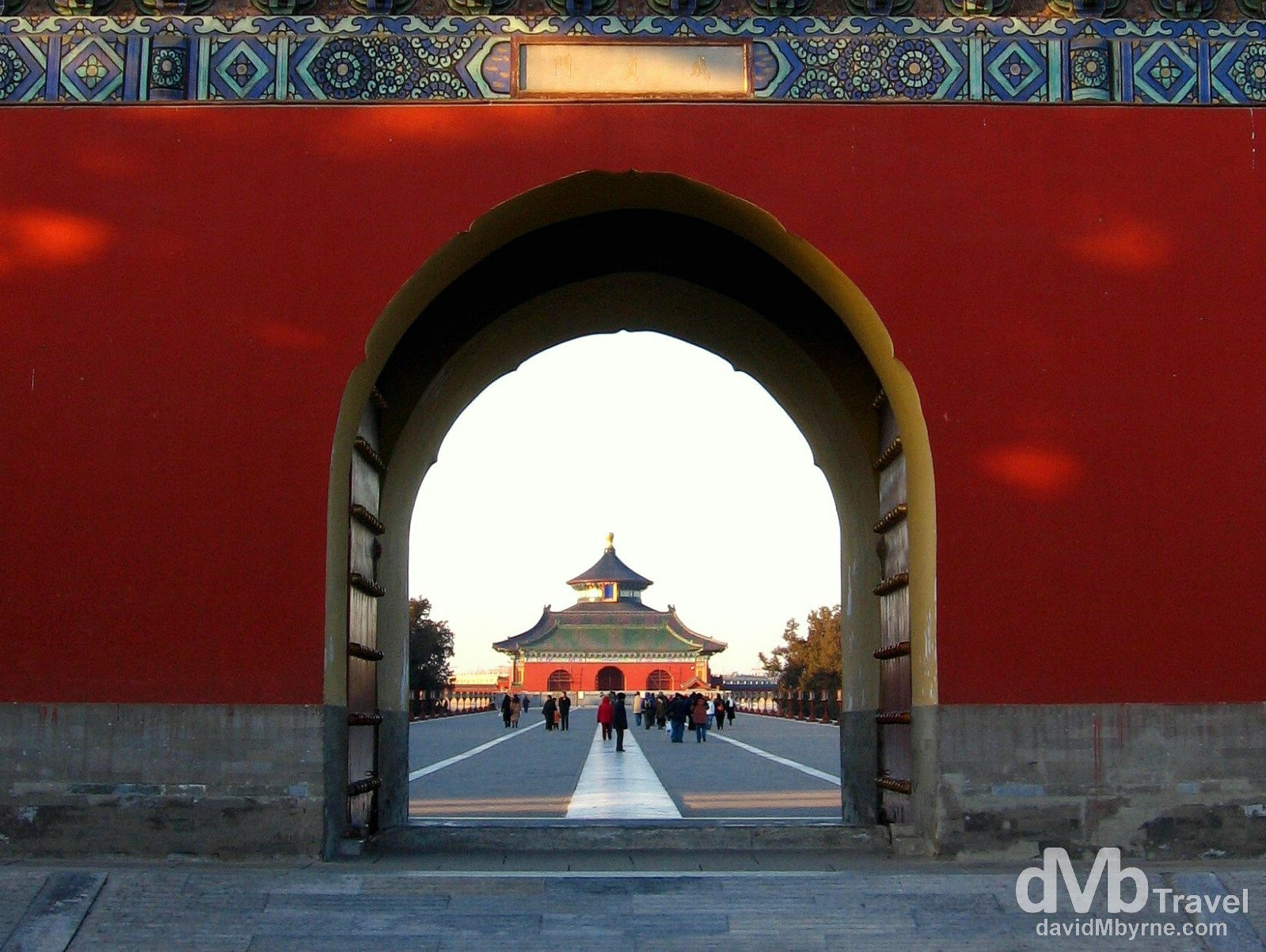
The Hall of Prayer for Good Harvests, the central structure of the Temple of Heaven complex. This is possibly my favourite sight in Beijing so I was really looking forward to returning here. I remember noting in my previous entry from Beijing that the Hall of Good Harvests of the Temple of Heaven complex (seen here in the distance) was, visually, the nicest temple I had ever seen – Angkor Wat in Cambodia still gets my vote for the most impressive temple overall. I visited previously on an overcast day and I remember commenting then on how gorgeous the temple colours must look on a clear day. Well this day was a crystal clear day but, like most sights in the city, the hall was closed off for renovations and thus this was about as near as we could get to it. But even from here I could see the beauty of the temple as the setting sun shone on the structure. The Temple of Heaven as seen from the walkway to the Circular Mound Altar. Beijing, China. February 8, 2006.
– UNESCO commenting on Temple of Heaven: an Imperial Sacrificial Altar in Beijing
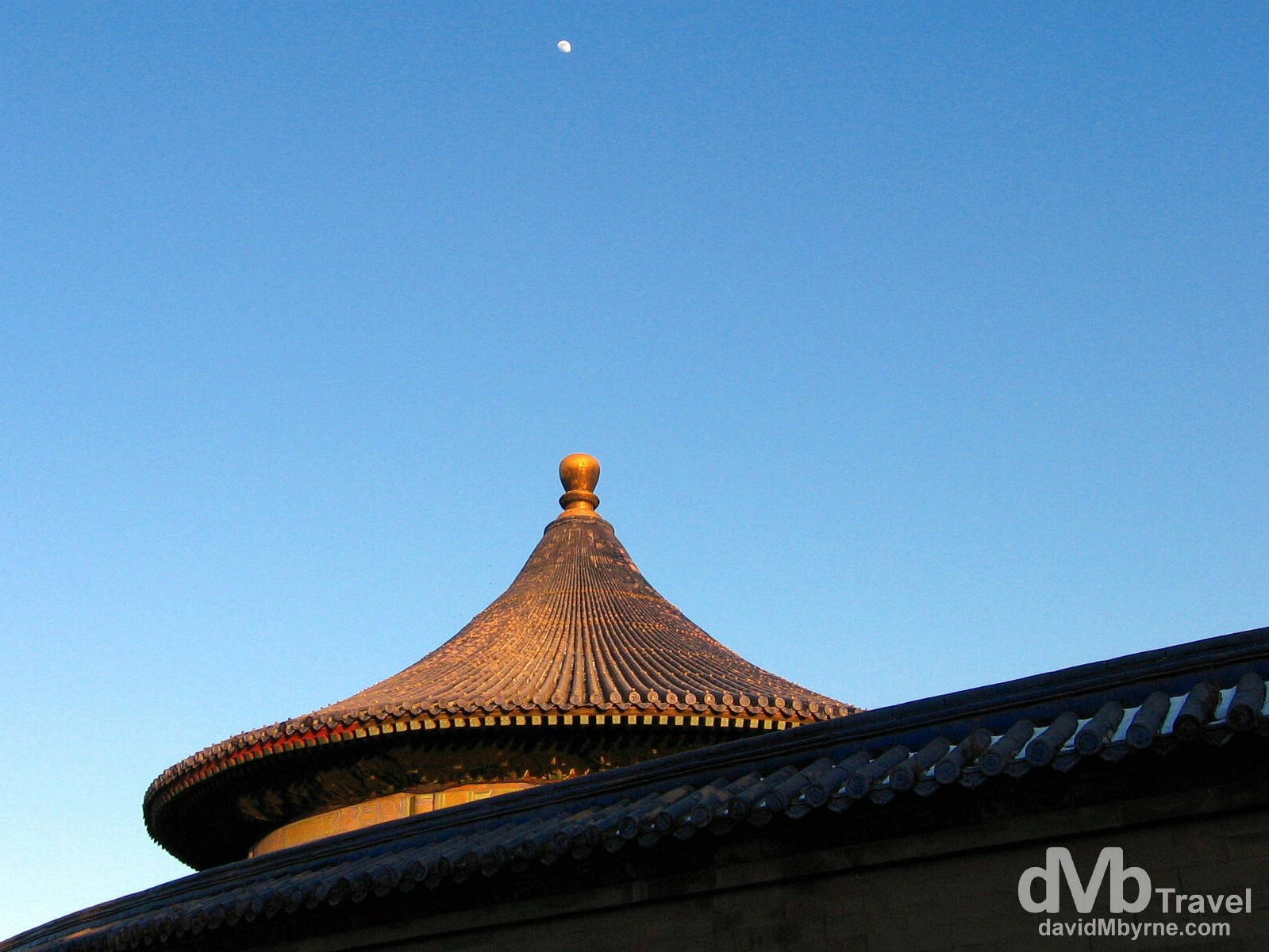
The roof of the Imperial Vault of Heaven, one of the buildings in the Temple of Heaven complex in Beijing, China. February 8, 2006.
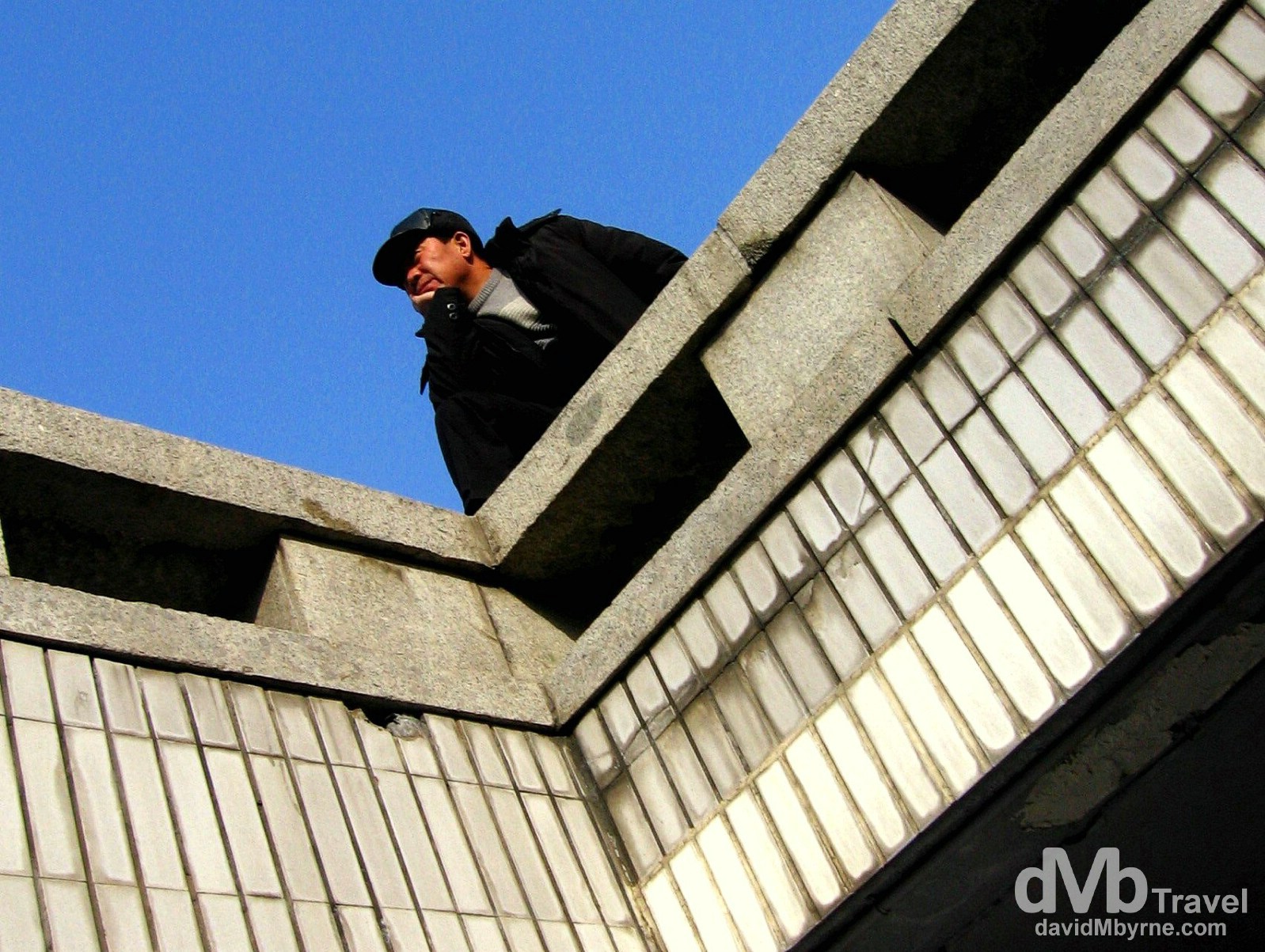
Watching life go by at an overpass in Beijing, China. February 10, 2006.
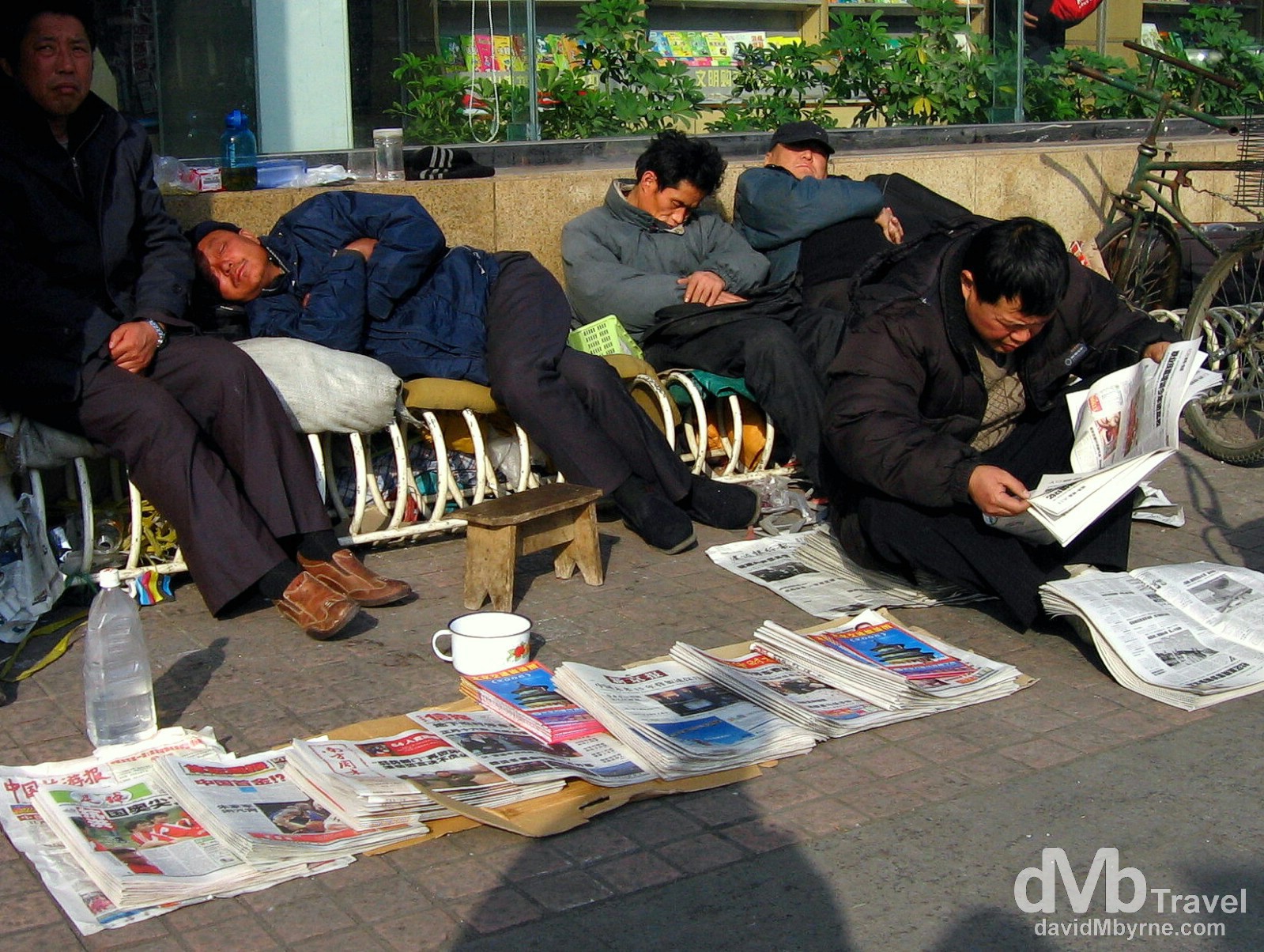
Snoozing on the streets of Beijing, China. February 10. 2006.
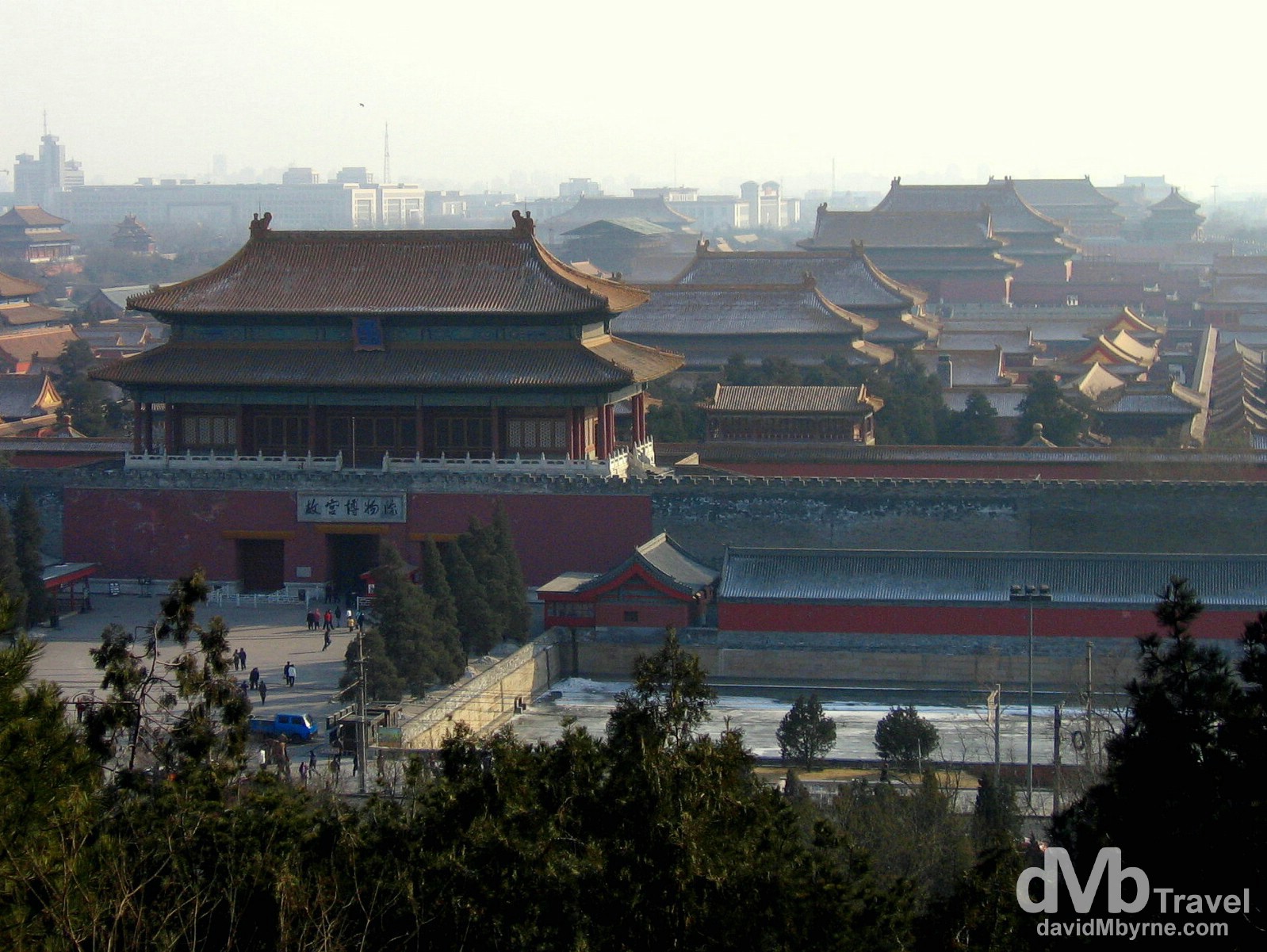
One of the last things I did on this visit to Beijing was to visit Jingshan Park, a park overlooking the Forbidden City, now renamed the Palace Museum. The park is at the north end of the Forbidden City, with Tiananmen Gate and Tiananmen Square at the south end, in the far distance. The park is a man-made hill that was created by the making of the Forbidden City moat. Although not very high, on a clear day the views over the Forbidden City are great and having been here before during hazy viewing conditions I was looking forward to getting back for the view on a clear day. Well, the day was indeed clear but surprise, surprise the viewing pavilion temple atop the park was undergoing renovations and was closed off to the public. A lower platform was accessible and it was from here I took this picture of the Forbidden City, the home of the successive dynasties who ruled China up until the early 1900’s, the last time China was under dynastic rule. Jingshan park, Beijing, China. February 11, 2006
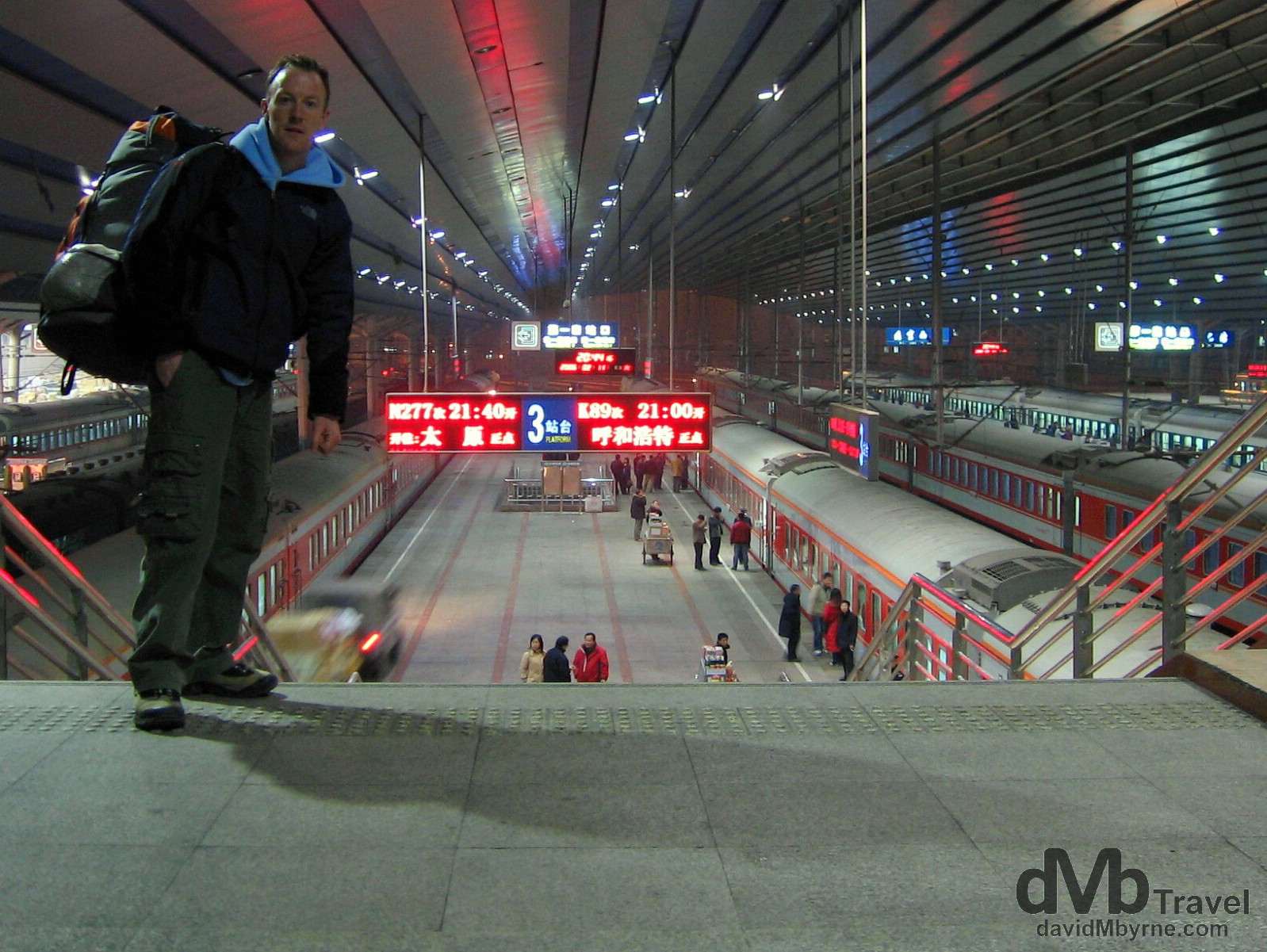
Moving on. Just about to board the K89 northwest to Hohhot in Inner Mongolia. Beijing West Train Station, Beijing, China. February 11, 2006
______________________________________________________________________
